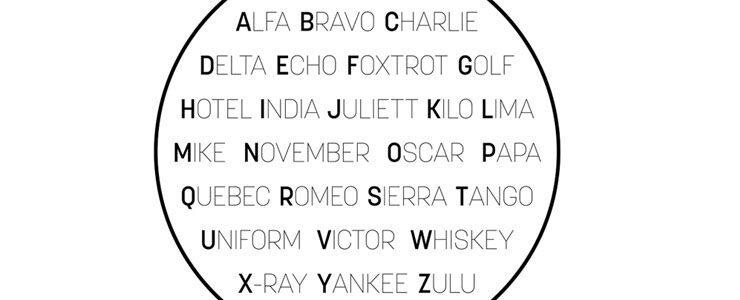
The NATO phonetic alphabet, also known as the International Radiotelephony Spelling Alphabet, is a standardized set of code words used to represent letters of the English alphabet. It is widely utilized in aviation, military operations, and other industries where clear communication is critical. In aviation, its primary purpose is to minimize misunderstandings caused by accents, similar-sounding letters, or poor audio quality during radio communications.
The NATO phonetic alphabet assigns a specific word to each letter of the English alphabet. Here is the full list:
Letter | Code Word |
A | Alpha |
B | Bravo |
C | Charlie |
D | Delta |
E | Echo |
F | Foxtrot |
G | Golf |
H | Hotel |
I | India |
J | Juliett |
K | Kilo |
L | Lima |
M | Mike |
N | November |
O | Oscar |
P | Papa |
Q | Quebec |
R | Romeo |
S | Sierra |
T | Tango |
U | Uniform |
V | Victor |
W | Whiskey |
X | X-ray |
Y | Yankee |
Z | Zulu |
Each word was chosen to be distinct and easily understood across various languages and accents, even in challenging communication environments.
In aviation, the NATO phonetic alphabet is essential for:
Pilots use the phonetic alphabet to identify their aircraft during radio transmissions. For example, an aircraft with the tail number N123AB would be pronounced as "November One Two Three Alpha Bravo."
Air traffic controllers (ATC) and pilots rely on the phonetic alphabet to avoid confusion when exchanging critical information, such as headings, call signs, or navigation fixes. For instance, if a pilot is directed to a waypoint labeled "FMS," it would be pronounced "Foxtrot Mike Sierra."
During emergencies, precise communication is vital. Using the phonetic alphabet ensures that instructions and reports are understood correctly, reducing the risk of errors.
When conveying unclear or critical information, pilots and controllers often spell out words using the phonetic alphabet. For example, if the pilot needs to confirm an unfamiliar waypoint "GATE," they would spell it as "Golf Alpha Tango Echo."
Aviation operates in a high-stakes environment where clear communication can make the difference between safety and disaster. The NATO phonetic alphabet eliminates ambiguity, ensuring that vital information is accurately conveyed, even in noisy or stressful conditions.
By adopting this universal standard, aviation professionals around the globe can communicate seamlessly, enhancing safety and efficiency in the skies. Whether you’re a pilot, controller, or enthusiast, understanding the NATO phonetic alphabet is a key part of aviation literacy.
Back to Articles